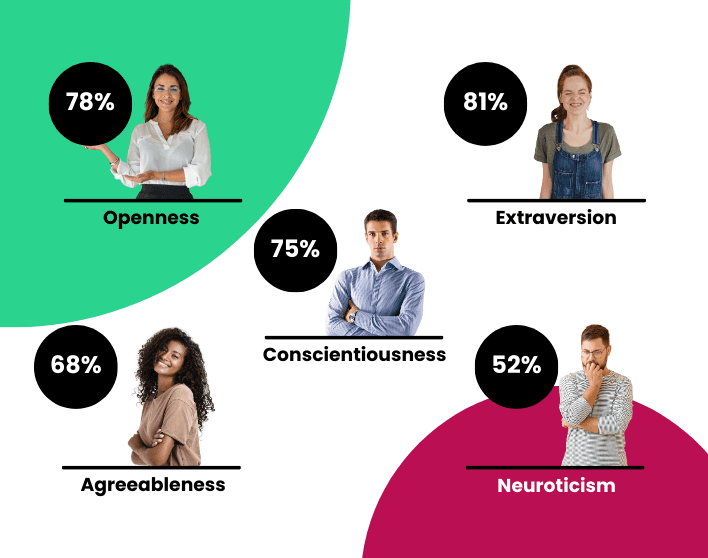The Bryq Team
HR Experts
Diversity and inclusion in the workplace is required in many companies. However, that’s not the only reason that your company should do it. It’s also great for the employees and for your bottom line. Find out more about how you can make some diversity and inclusion efforts in your working environment.
What Is Diversity and Inclusion?
The first thing that you need to know is that diversity and inclusion are two different things. Confused? Let us explain.
Diversity
Diversity in the workplace is all about having staff of different backgrounds make up your workforce. A diverse staff may include those who are ethnically diverse, have a range of sexual orientations, and are a range of genders. Plus, there could be people with differences in abilities, religions, ages, education levels, skills, and more.
Inclusion
Diversity is the first step that many companies need to take. It is only after that when you can start to work on inclusion. Inclusion is all about creating an environment where these diverse employees are listened to, respected, and valued for their differences. You can’t treat it like a checkbox exercise where you tick ‘diversity and inclusion in the workplace’ because you have diverse employees. It is even more important to engage with these people and make them feel a true part of the workplace.
Benefits of Diversity and Inclusivity in The Workplace
Building a diverse workforce has plenty of rewards for your company. In fact, diverse companies feature heavily amongst the top companies in the Fortune 500. So clearly, they are doing something right. Here are some of the benefits:
Better decision making
Higher revenue
Outperform other companies
Increased innovation
Better company culture
Increased employee engagement
How Can You Improve Diversity and Inclusion in the Workplace?
Here is your step by step guide to improving diversity and inclusion in your workplace. Remember that while you may have to spend some money on this process, the financial returns will be worth it.
Data Collection
Before you can start improving anything, you need to fully understand what the current state of affairs is. Start by collecting and analyzing diversity data for your workforce. This will give you an idea of whether your current practices are working to create a diverse workforce. You may find that the data is skewed, for example, having far more employees of one gender or race. In this case, you will need to proceed to step 2 to start improving your practices.
Set Goals
The question you need to ask yourself is what does your ideal diverse and inclusive workforce look like? Then you can set goals to help you achieve this. For example, if you find that your management team is made up of mostly men, maybe you will set a goal to have more women and other genders in management roles. Whatever your goals are, make them specific and hold yourself accountable for reaching it. Ensure that they target every level of the organization as well.
Improve Policies or Procedures
Now, of course, you need to achieve diversity and inclusion in the workplace, and be a place where all employees feel heard. You need to identify at what stage you’re not getting enough diversity in your company. Is it in the hiring process? Or do diverse people get hired but leave quickly due to lack of inclusion?
Here are some of diversity and inclusion workplace strategies you can implement:
Training Programs
It’s important that all of your current staff have a deep understanding of what it means to have diversity and inclusion in the workplace. That’s why it’s a good idea to implement training to target unconscious biases and educate your staff. Get a trained professional to deliver these to ensure that you are educating your staff correctly.
Improve Company Culture
If your company culture promotes certain ways of life, this can be problematic. For example, only celebrating Christian holidays such as Christmas. Consider what your other employees celebrate and celebrate those holidays too. Or cancel it altogether and just have an end of year party. Otherwise, you will be favoring one religion over the many others that no doubt exist in your workplace.
Blind Recruitment
Blind recruitment is a fantastic way to take unconscious biases out of the hiring process. This process involves removing any identifying details from job applications. This includes name, age, ethnicity, photos, and any other factors that may induce a bias. This way, you can make your hiring decisions based purely off of experience and skills. Many companies are surprised to find that their hires become much more diverse after they implement blind recruitment processes.
Other strategies to consider include:
Create networks for employees to provide resources and support
Report goals and progress in annual reports
Announce your strategies to stakeholders for buy-in and accountability
Create anti-discrimination policies
Be Accountable
Announce to all of your employees what you’re doing and why. This will hold you accountable to following through with the processes you said you would implement. Plus, you can gain a lot of buy-in and support from your current employees. This is critical so that they will be welcoming and inclusive of new employees, creating a positive company culture.
Measure Outcomes
One of the most important things you can do that is often forgotten by companies is measuring the outcomes of your initiatives. It’s not enough to just implement the ideas you have to create diversity and inclusion in the workplace. You also need to check whether these strategies were effective. Then you can review and adjust them as needed until they are helping you to achieve your goals.
Reporting your diversity outcomes externally can also help you stay accountable for what you do. And if you’re doing well and hitting all of your goals, this will also be great for your brand image.
Increase diversity and inclusion at your company and not only will you reap the rewards, but you will have happier employees too. Creating diversity and inclusion workplace goals is a good place to start. But, the most important aspect is your strategies, implementing them, and measuring your outcomes. So, you’d better get started!






